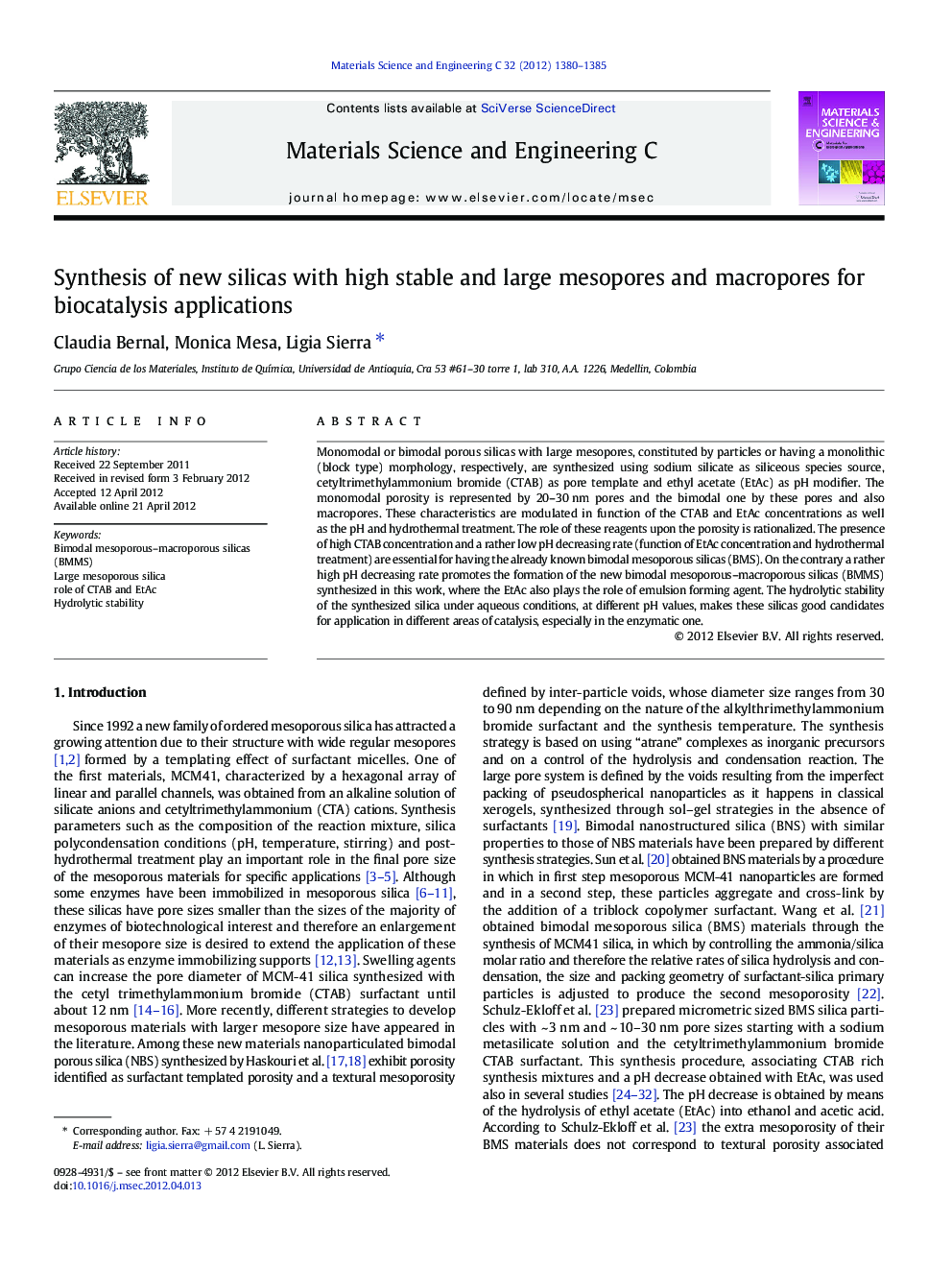| Article ID | Journal | Published Year | Pages | File Type |
|---|---|---|---|---|
| 1428925 | Materials Science and Engineering: C | 2012 | 6 Pages |
Monomodal or bimodal porous silicas with large mesopores, constituted by particles or having a monolithic (block type) morphology, respectively, are synthesized using sodium silicate as siliceous species source, cetyltrimethylammonium bromide (CTAB) as pore template and ethyl acetate (EtAc) as pH modifier. The monomodal porosity is represented by 20–30 nm pores and the bimodal one by these pores and also macropores. These characteristics are modulated in function of the CTAB and EtAc concentrations as well as the pH and hydrothermal treatment. The role of these reagents upon the porosity is rationalized. The presence of high CTAB concentration and a rather low pH decreasing rate (function of EtAc concentration and hydrothermal treatment) are essential for having the already known bimodal mesoporous silicas (BMS). On the contrary a rather high pH decreasing rate promotes the formation of the new bimodal mesoporous–macroporous silicas (BMMS) synthesized in this work, where the EtAc also plays the role of emulsion forming agent. The hydrolytic stability of the synthesized silica under aqueous conditions, at different pH values, makes these silicas good candidates for application in different areas of catalysis, especially in the enzymatic one.
Graphical abstractFigure optionsDownload full-size imageDownload as PowerPoint slideHighlights► New meso-macroporous silicas synthesis with CTAB surfactant and ethyl acetate (EtAc) ► Fast pH decrease is achieved by adding EtAc to Na2O/SiO2 solution of molar ratio = 0.3 ► Formation of large mesopores requires fast pH decrease and high CTAB/SiO2 ratio ► Macropores result from the formation of stabilized ethyl acetate micrometric drops ► These silicas have porous qualities and stability for application in biocatalysis
